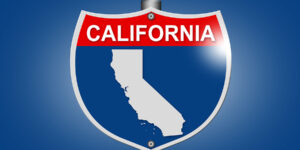Capital Returns Management LLC, the fifth largest shareholder of Watford Holdings Ltd., is urging the reinsurer to sell itself or be put into runoff.
In a letter to Watford’s board of directors, the activist shareholder and specialist insurance investor complained about “consistently poor operating and stock performance” in comparison with its peers in the industry.
For the comparison, Capital Returns analyzed a Watford peer group consisting of Alleghany, Arch Capital, Argo, AXIS, Everest Re, Greenlight Re, Lancashire, RenaissanceRe, Sirius and Third Point Re.
Since Watford’s formation in 2014, the company’s performance “has fallen horribly short of expectations”, said Ronald D. Bobman, president of New York-based Capital Returns Management, who signed the letter. Capital Returns owns 450,000 common shares of Watford.
Capital Returns recommended that Watford’s board conduct a strategic review and consider “all alternatives to create value for shareholders,” including selling itself, possibly to a runoff specialist, or alternatively to administer its own runoff.
Watford did not respond to a request for comment.
In early May, AM Best placed Watford Re’s ratings under review with negative implications. (Watford Re is a subsidiary of Watford Holdings). AM Best said the rating action followed an announcement from Watford on April 23, which revealed its 2020 first quarter earnings include a net investment loss of approximately $300 million due to investment market volatility following the global economic shutdown related to the COVID-19 pandemic.
In its letter to Watford’s board, Capital Returns described the company’s “poor performance” for shareholders, citing the company’s current public market valuation, which is equivalent to “an unprecedented 60-plus percent discount” to tangible book value.
The market clearly expects a continuing loss of value, said the letter, which was sent to the board on May 15, and posted on PR Newswire on May 19.
“With minimal inherent skills, no competitive strengths and just a dozen employees, the company’s success has been entirely dependent on Arch and HPS [Investment Partners], both of which have benefited greatly in the form of fees paid by Watford,” said Capital Returns.
Watford’s underwriting operations are managed exclusively by subsidiaries of Arch Capital Group Ltd., which also has a $100 million equity investment in Watford. Further, a significant majority of Watford Re’s investments are managed by HPS Investment Partners, explained an entry on Bermuda-based Watford’s website.
“Despite unprofitable underwriting and investment results, Watford has made cumulative fee payments of more than $72 million to Arch and $121 million to HPS from 2016 through 2019,” added Capital Returns.
“[W]hile I have always been an admirer of Arch and its 20-year history of consistently outstanding performance— including a 1600 percent stock price increase—Watford’s shareholders have seemingly not benefited from Arch’s excellent judgement and operating skill,” said Bobman in his letter.
A representative at Arch had no comment on the letter.
The investor urged Watford to consider the example of reinsurer Blue Capital Re, which took “proactive steps in 2019 to create value for shareholders when its stock was trading at 60% of its tangible book value.”
“Blue Capital Re’s board, following a strategic review conducted by financial advisors, considered acquisition proposals from third parties and ultimately made the decision to execute a self-administered runoff. That runoff has been successful and is well on pace to return 92+% of its book value to shareholders,” Capital Returns continued in its letter.
The investor offered a comparison of Watford’s key performance metrics relative to the peer group of reinsurers, which it says demonstrates “the performance disparity.”
- Watford’s combined ratio for 2016 was 101.8% compared with peer reinsurers’ combined ratio of 91.4 during 2016.
- Watford’s combined ratio for 2017 was 112.5, compared with peer reinsurers’ combined ratio of 110.6
- Watford’s combined ratio for 2018 was 104.5, compared with peer reinsurers’ combined ratio of 98.3.
- Watford’s combined ratio for 2019 of 109.7, compared with peer reinsurers’ combined ratio of 98.1
- Watford’s year to date combined ratio of 104.4, compared with peer reinsurers’ combined ratio of 100.3.
Further, Watford’s portfolio return figures were compared to its peer group as follows:
- Watford’s portfolio return was 10.3 percent in 2016, compared to a return of 2.9 percent for the peer group
- 4.1 percent in 2017, compared to a return of 3.6 percent for the peer group
- -0.3 percent in 2018, compared to a return of -1.9 percent for the peer group
- 6.4 percent in 2019 (peers: 3.9 percent)
- -13.0% for the year to date in 2020 (peers: -3.7 percent)





















 U.S. High Court Rejects $2.46B Boy Scouts Sex Abuse Settlement Challenge
U.S. High Court Rejects $2.46B Boy Scouts Sex Abuse Settlement Challenge  Five AI Trends Reshaping Insurance in 2026
Five AI Trends Reshaping Insurance in 2026  Why ‘Good Enough’ Is Killing Insurance: The Hidden Cost of Satisficing
Why ‘Good Enough’ Is Killing Insurance: The Hidden Cost of Satisficing  10 Highest Class-Action Settlements in 2025 Eclipsed $70B Total: Duane Morris
10 Highest Class-Action Settlements in 2025 Eclipsed $70B Total: Duane Morris 

